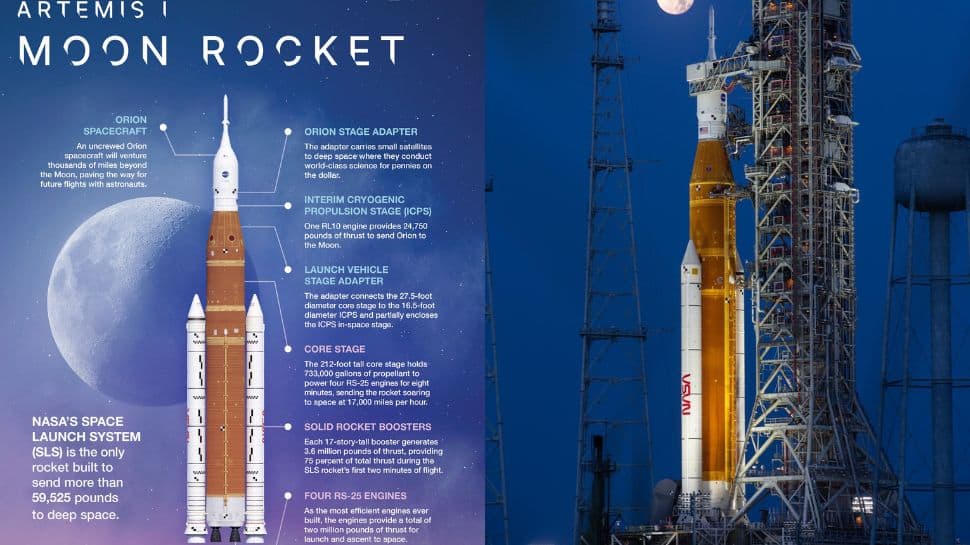NASA set to launch Artemis-1 mission to Moon on its most powerful rocket yet - Here's all you need to know
Artemis 1 is the first flight of the agency's new megarocket, the towering Space Launch System (SLS).
Trending Photos
) Credits: NASA
Credits: NASA New Delhi: Over 50 years after the Apollo missions were shut down, Nasa is reattempting to fly humans to the Moon. NASA's new moon rocket remained on track to blast off on a crucial test flight Monday, despite a series of lightning strikes at the launch pad. The 322-foot (98-metre) Space Launch System rocket is the most powerful ever built by NASA. NASA's new moon rocket poised to send an empty crew capsule into lunar orbit, a half-century after NASA's Apollo programme, which landed 12 astronauts on the moon.
The mission, which is a test flight, is aimed at establishing the ability of the rocket to deliver. Artemis 1 is the first flight of the agency's new megarocket, the towering Space Launch System (SLS).
Although Artemis 1 won't carry passengers or touch down on the moon, this mission of NASA is essential for proving that NASA's enormous rocket and deep space capsule can live up to their claims of prowess.
“We’re going to stress it and test it. We’re going to make it do things that we would never do with a crew on it in order to try to make it as safe as possible,” NASA Administrator Bill Nelson told The Associated Press.

When to watch launch of NASA’s Artemis-1 Moon mission?
The maiden launch of NASA’s Artemis-1 Moon mission spacecraft is being targeted in a two-hour launch window on August 29. The lift-off is currently scheduled for 8:33 a.m. EDT or 6:00 pm IST on Monday.
Where to watch launch of NASA’s Artemis-1 Moon mission?
NASA will live stream the launch on NASA's website- https://www.nasa.gov/
Notably, the spacecraft will travel 40,000 miles beyond the far side of the moon and stay in space longer than any human spacecraft has without docking to a space station. The capsule is expected to splash down in the Pacific Ocean in October.
After so many years of delays and setbacks, the launch team was thrilled to finally be so close to the inaugural flight of the Artemis moon-exploration programme, named after Apollo's twin sister in Greek mythology.
The follow-on Artemis flight, as early as 2024, would see four astronauts flying around the moon. A landing could follow in 2025. NASA is targeting the moon's unexplored south pole, where permanently shadowed craters are believed to hold ice that could be used by future crews.
Stay informed on all the latest news, real-time breaking news updates, and follow all the important headlines in india news and world News on Zee News.
Live Tv







)
)
)
)
)
)
)
)
)
)
